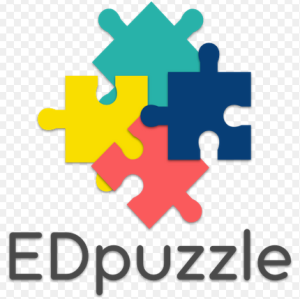According to the Learning Disabilities Association of America, “It is estimated that between 3 and 5 percent of children have attention deficit hyperactivity disorder (ADHD). This means that in a classroom of 24 to 30 children, it is likely that at least one will have ADHD.” In addition, ADHD is more common in males than in female. Purdie, Hattie and Carroll (2002) report that boys are at least five times more likely to be affected by ADHD than girls (p. 63). While the exact causes of ADHD are unknown, some claim that there is a biological factor as there appears to be a link to neurotransmitters and certain areas of the brain. There is also evidence that suggests that ADHD can be associated with a chaotic home life including marital problems, hostility, and family dysfunction (Purdie et al., 2002, p. 63). Finally, Purdie et al. (2002) state that numerous other causes resulting in ADHD have been proposed such as sugar, food additives, and lead poisoning (p. 64).
Although ADHD is not considered a learning disability, it does pose challenges in the classroom. The Centers for Disease Control and Prevention state that students with ADHD are easily distracted, have trouble holding attention during tasks, often fail to complete assignments, and are forgetful. Medication has often been the go to plan to treat ADHD. However, according to Purdie et al. (2002), “when children are given medication, there is only a small improvement in their general cognitive abilities” (p. 88). While medication may provide a benefit, it is not enough. Educators must structure their class in a way that allows these students to excel. Unfortunately, according to Graczyk et al. (2005) while many teachers have a basic understanding of ADHD, they lack confidence in their ability to teach students with ADHD (p. 96). The results of their study showed that on average, “educators expressed ‘just a little’ confidence in their ability to address the needs of students with ADHD” (p. 99).

To better serve students with ADHD, teachers need to be trained in best practices. In addition, there are many different technology tools that can be used to help students (both with and without ADHD) to focus on the tasks at hand. One of those tools is EDpuzzle. EDpuzzle allows teachers to take a great video and make it better. The video can be cropped, audio can be re-recorded, notes can be included and questions can be added. Videos can be great instructional tools as they use both visual and audio components. This allows many different types of learners to glean information from this source. However, videos can also pose several problems.
- Videos are often too long and if the video was created by someone else, there is a good chance that it contains additional (and unnecessary) information. EDpuzzle provides an easy way to crop the video. Simply slide the cropping tool to your intended starting and stopping points. Now your video only contains the necessary information. This is crucial for students with ADHD as it reduces the amount of time that they are required to focus. It also helps them identify what is important as non-critical areas have been removed.
- Videos produced by other people often word things different. EDpuzzle allows the teacher to record their own audio track. Stating information in a way that is already familiar to a student with ADHD will help them stay focused and may lead to better retention.
- The video chosen might not stress (or even mention) a point you think is important. EDpuzzle allows the teacher to add audio comments, remarks, conclusions, etc at any point throughout the video. This is a great way to stress key points for those students (with ADHD or not) who have trouble following and organizing the main ideas.
- Students are often asked to answer questions either during or after a video. If the questions are being answered during the video, students often miss the next part of the video while they are answering a question. EDpuzzle allows questions to be inserted throughout the video. When a question pops up, the video is automatically paused so that material is not missed. These questions can help students maintain their focus throughout the video as well as identify the key points that they need to come away with.
The combination of editing tools provided by EDpuzzle makes it easier for all students (especially those with ADHD) to maintain their focus, identify the key points being presented and complete their work.
For more information on how EDpuzzle can be used in your classroom to help students with ADHD excel, watch the EDpuzzle Demo screencast embedded below.
References:
Centers for Disease Control and Prevention. (2015). ADHD Symptoms and Diagnosis. Retrieved from http://www.cdc.gov/ncbddd/adhd/diagnosis.html
Graczyk, P., Atkins, M., Jackson, M., Letendre, J., Kim-Cohen, J., Baumann, B., & McCoy, J. (2005). Urban Educators’ Perceptions of Interventions for Students with Attention Deficient Hyperactivity Disorder: A Preliminary Investigation. Behavioral Disorders 30(2), 95-104.
EDpuzzle. (2015). https://edpuzzle.com/
Learning Disabilities Association of America. (2015). ADHD. Retrieved from http://ldaamerica.org/types-of-learning-disabilities/adhd/
Purdie, N., Hattie, J., & Carroll, A. (2002). A Review of the Research on Interventions for Attention Deficit Hyperactivity Disorder: What Works Best? Review Of Educational Research, 72(1), 61–99. http://doi.org/10.3102/00346543072001061

I found EdPuzzle to be a great tool when I flipped my classroom, and I found that flipped learning worked really well for a lot of my students with ADHD, because they always had access to the direction instruction I provided. If they zoned out during what I was saying, they could always rewind.
Additionally, knowing how many times they rewatched a segment of the video and whether or not they got the quiz questions right gave me insight into how well my students paid attention during the screencast!
LikeLike